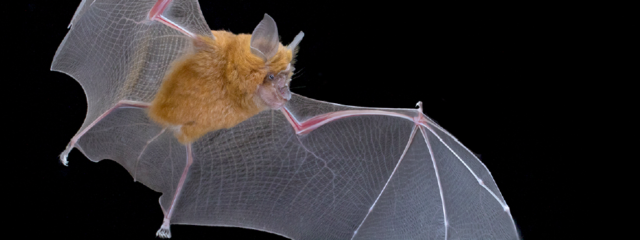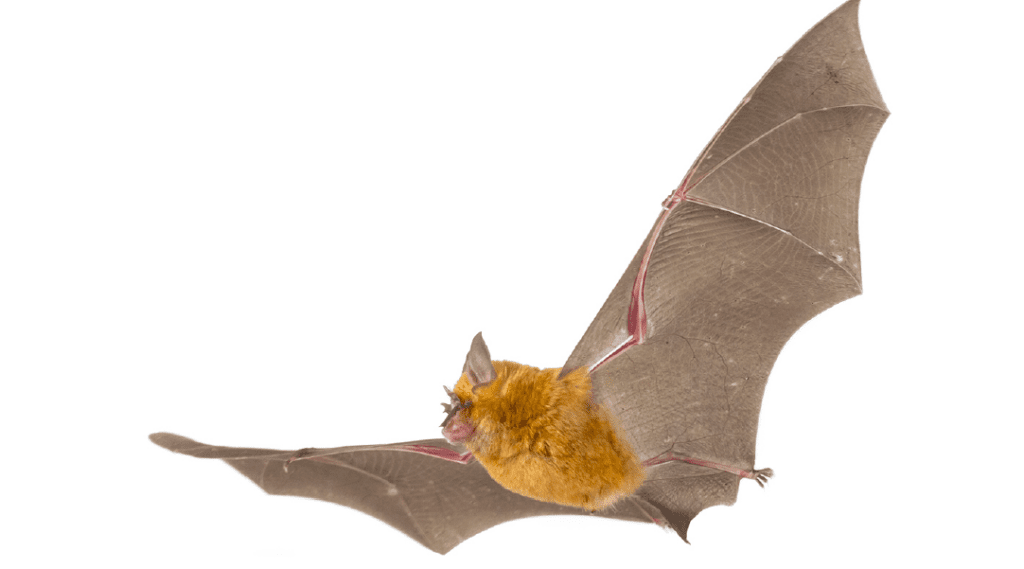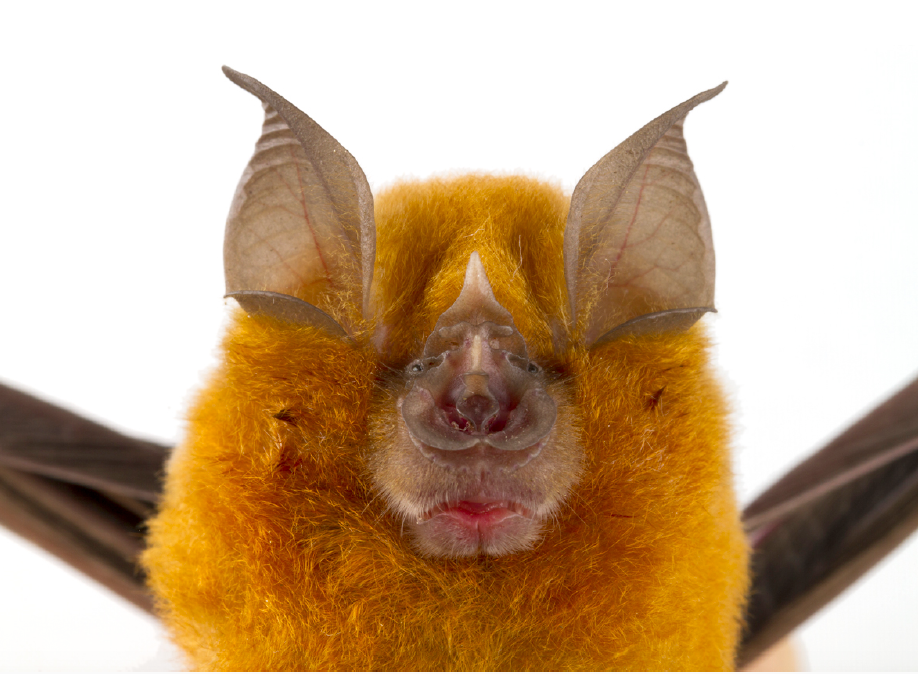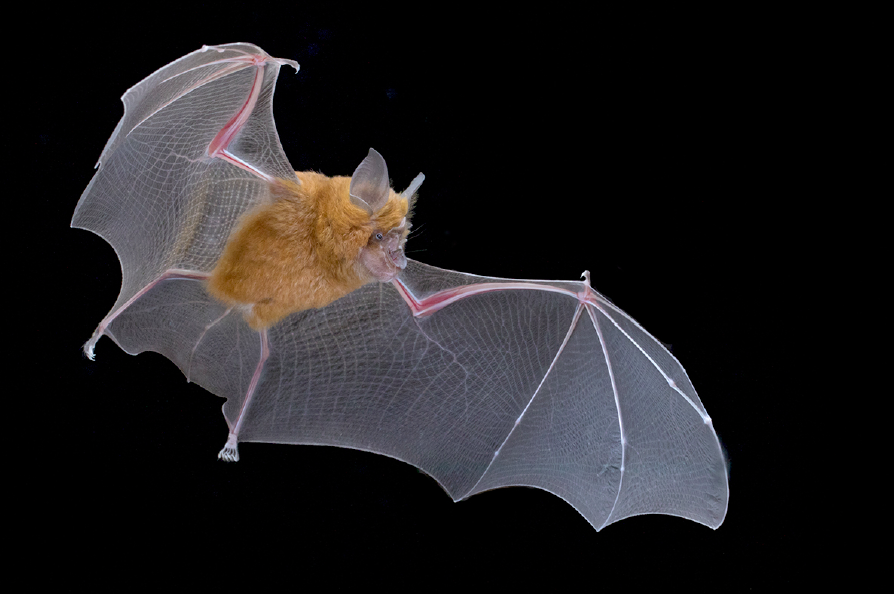

Wednesday, April 25th, 2018
Gorongosa National Park in Mozambique is home to the E.O. Wilson Biodiversity Laboratory. Born from the realization that biodiversity conservation must be developed and maintained at the heart of the Gorongosa Restoration Project, the Laboratory was created to train a new cadre of Mozambican scientists, conduct long-term research and document Gorongosa’s vast biological richness. The new bat species just discovered is a testiment to the success of this partnership.
Mozambique, Africa – A new study just published in the Zoological Journal of the Linnean Society has described three new bat species in southern Africa. One (named Rhinolophus gorongosae) seems to occur only in Gorongosa National Park in Mozambique and possibly also on nearby Mount Mecula. Using genetic and morphological techniques, R. gorongosae was found to be distinct from neighboring horseshoe bat populations. With a mass of only 5 g this “dwarf” becomes Africa’s smallest horseshoe bat.


Rhinolophus gorongosae
A second species, Rhinolophus rhodesiae, has also been confirmed to be a distinct species found in northern Mozambique and other parts of southern Africa. “We’re thrilled to add two new bat species to the checklist for Mozambique,” says Jen Guyton, one of the co-authors. “It’s not often that new mammal species are described anymore, but genetic methods are revolutionizing taxonomy and allowing us to unearth a whole host of cryptic species.”
Additionally, the southern African population of a third species, Rhinolophus lobatus, previously considered identical to a West African species R. landeri, has been described as a new species unique to Mozambique and South Africa. It replaces R. landeri on the species list for Mozambique.


Rhinolophus gorongosae
Using a range of modern techniques from acoustic analysis of bat echolocation calls to molecular DNA analysis and morphological studies of the skull, nose leaf and penis bone (baculum), led by Professor Peter Taylor from University of Venda and the Centre for Invasion Biology and a large team of co-workers from UKZN, Stellenbosch University, Wits University, University of Pretoria, University of Swaziland, the Field Museum of Natural History in Chicago, the Ditsong National Museum and the Durban Natural Science Museum, the study highlighted the narrow distribution range of these new species. Two scientists from Gorongosa National Park, Princeton University PhD candidate Jen Guyton and Piotr Naskrecki, associate director of the E.O. Wilson Lab, also contributed to the description of R. gorongosae and R. lobatus. These descriptions were based largely on specimens collected in Gorongosa over the past five years and held at the Durban Museum in South Africa, as well as acoustic recordings made on Gorongosa bats. These specimens and recordings were collected as part of the E.O. Wilson Lab’s annual biodiversity surveys, which seek to document all macroscopic flora and fauna in the Greater Gorongosa Ecosystem.
Due to their provision of ecosystem services, high diversity, and patterns of endemism, bats are of particular conservation concern and are an apt group for setting conservation priorities. At around 1,115 recognized species, bats represent about 20% of all mammalian species. This study brings the bat species count for Mozambique to 71. These discoveries add to the already remarkable diversity and complexity of the Gorongosa ecosystem, which suffered near-total declines of large mammals during the Mozambican civil war. Since 2004, the Carr Foundation and the government of Mozambique have worked to restore the ecosystem to its pre-war state, with incredible success. Recently, Gorongosa scientists have discovered that the park and its surrounding areas (the Greater Gorongosa Ecosystem) boast a particularly rich bat fauna as well.
As of 2018, at least 45 bat species are known from the GGE, which is ~63% of the total number of species known from Mozambique. This species count exceeds the 42 known bat species for South Africa’s Kruger National Park, a much more thoroughly-studied protected area that is larger than the GGE. However, Mozambique is poorly explored and a number of known bat species are cryptic; some northern parts of the country lack bat data entirely. The authors of this paper are thus confident that Mozambique will continue to produce new bat species in the near future. “Gorongosa Mountain, the southernmost fragment of Afromontane rainforest in the world, and Khodzué, the enormous limestone cave system within the Gorongosa ecosystem where Rhinolophus gorongosae also occurs, are biodiversity treasures for Africa,” says Guyton. “Our annual biodiversity surveys have already unearthed a wealth of species in the Greater Gorongosa Ecosystem, but places like Khodzué and Gorongosa Mountain merit further exploration.” “This study highlights the importance of protected areas such as Gorongosa National Park to the survival of the world’s biodiversity”, says Naskrecki. “Mozambique is quickly becoming one of the leaders in conservation of African biodiversity, and more discoveries like this one are expected.”


Rhinolophus gorongosae
About the Gorongosa Project
Gorongosa National Park (GNP) in Mozambique is perhaps Africa’s greatest wildlife restoration story. In 2008 a 20-year Public-Private Partnership was established for the joint management of GNP between the Government of Mozambique and the Carr Foundation (Gorongosa Project), a US nonprofit organization. In 2016 the Government of Mozambique approved the extension for another 25 years of joint management. By adopting a 21st Century conservation model of balancing the needs of wildlife and people, Gorongosa is protecting and saving this beautiful wilderness, returning it to its rightful place as one of Africa’s greatest national parks.
If you would like to receive more information about our program or schedule an interview with someone involved in the program, please contact Vasco Galante by phone (+258 82 297 0010) or email (vasco@gorongosa.net). For more general information, visit http://www.gorongosa.org.

